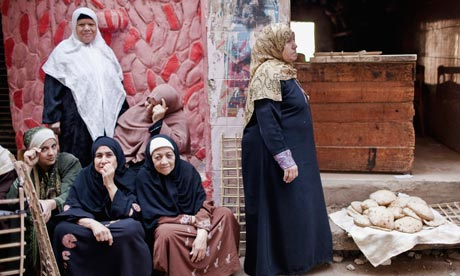Foreign aid for development in poorer countries hit a record high last year, with large spending increases recorded by the UK, Iceland, Japan and the United Arab Emirates.
Figures released by the Organisation for Economic Co-operation and Development (OECD) on Tuesday show official development assistance (ODA) grew by 6.1% in 2013 to $134.8bn (£80.3bn) after falling for two years in a row in as donors grappled with austerity measures and increasingly divided public opinion in many countries.
Seventeen countries in the OECD's development assistance committee (DAC) increased their aid spending last year, with huge jumps recorded by some donors. The UK's spending grew by 27.8% to hit for the first time the international target to spend 0.7% of gross national income (GNI) as aid.
Iceland's aid spending also rose by more than 27% in 2013, and Japan's by 36.6%. Norwegian and Italian aid rose by more than 10%. Other countries, not part of the OECD-DAC group, also recorded significant spending increases. Estonia, Russia and Turkey each reported rises of more than 20%.
Aid from the United Arab Emirates, meanwhile, soared by 375.5%, largely because of exceptional support extended to Egypt. In 2013 it spent 1.25% of its GNI as aid – more than any OECD-DAC donor. At the same time, aid spending fell in almost a dozen countries, with the biggest decreases in Canada (-11.4%), France (-9.8%) and Portugal (-20.4%).
The OECD also warned that the share of aid going to some of the world's least developed countries was falling, despite the overall increase in spending. In 2013, aid to Africa fell by 5.6% in 2013, to $28.9bn.
The OECD secretary-general Angel Gurría said: "It is heartening to see governments increasing their development aid budgets again, despite the financial constraints they are currently facing. However, assistance to some of the neediest countries continues to fall, which is a serious concern."
The Paris-based forum also noted that more donors were giving aid in forms other than grants, with countries counting a growing amount of equity investments and loans – which developing countries must pay back – as ODA. In 2013, grants grew by only 3.5% while other forms of spending rose by 33%.
A survey of donors' spending plans suggests aid levels could rise again in 2014 and stabilise thereafter. However, the share of aid going to the countries most in need, including in sub-Saharan Africa, will decrease even further.
The survey suggests donors will focus spending on middle-income countries including Brazil, China, Chile, Mexico, India and Pakistan. Aid to these countries will probably be in the form of loans, it says.
Aid from rich countries grew steadily from 1997 to 2010, before falling in 2011 and 2012. The US remained the largest aid donor in 2013, spending $31.5bn. Denmark, Luxembourg, Norway and Sweden continued to exceed the 0.7% target. The Netherlands fell below 0.7% for the first time since 1974.
Seamus Jeffreson, director of Concord, the European confederation of relief and development NGOs, welcomed 2013's rise in spending, but warned that the effect of previous aid cuts was still being felt in poor countries. "Aid austerity is starting to reverse across Europe, despite two years of substantial cuts that are still felt by some of the world's poorest," he said. "Many development projects have been stopped or abandoned as a consequence."
The OECD-DAC defines and polices what spending its members can count as aid. The current ODA definition, set in 1969, requires donors count only spending that has the economic development of poorer countries as its primary objective. In practice, however, the rules have allowed countries to count a wide range of activities.
Guardian analysis in February revealed that millions of pounds of UK aid money is spent in Britain. In 2012, almost £12m went on such projects as global citizenship lessons in Scottish schools, military and security training for officials from African countries at the UK's Defence Academy, and a "study visit" to the UK for North Korean officials.
The rules on what spending donors are allowed to count as ODA are potentially up for revision this year, before the 2015 deadline for the millennium development goals. Some want to see the definition tightened so that only money that reaches developing countries can count. But some donor governments hope to see the definition expanded so they can report more loans and other financial instruments, such as guarantees, as aid.
On Monday, the Daily Mail reported that some UK ministers were backing plans to allow billions of pounds in military spending to count towards Britain's total aid spending.
.




